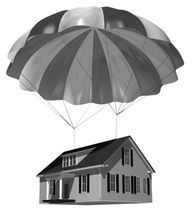CHAPTER SIX
MARKET FOR DISTRESSED REAL ESTATE AND LOANS
Late to develop; Keep your capital poised
During the last major real estate recession that stretched from the late 1980s through the early 1990s, Douglas Wilson, a San Diego developer, decided there was so much turmoil in the real estate markets, with builders and savings & loans failing all about him, he created an organization to help manage distressed real estate situations.
Douglas Wilson Companies, which was founded in 1989, is still around today, and busier than ever.
“I’m a bit of an early warning barometer because I get calls from lenders when things get troublesome,” Wilson tells me.
“Well, when did you start getting calls?” I ask.
He replies, “About two years ago (2006).”
In retrospect, preliminary events happen in slow motion. The housing market began to stall in 2006. There were stories in the newspapers about the residential housing market being a bubble that was about to burst, but it wasn’t until 2007 that problems really started to surface, finally culminating with the subprime market blowing up during the summer of that year.
Companies that invest in distressed situations began gearing up for a boom market probably as early as 2006, but definitely in the later months of 2007. The firms got funds organized, investors started depositing capital, and analysts poured over the financials of crumbling loans.


